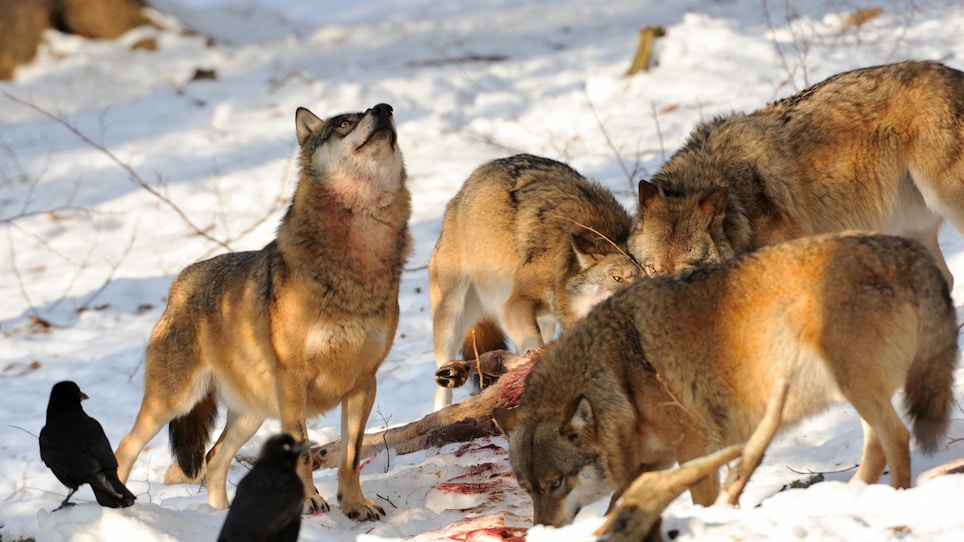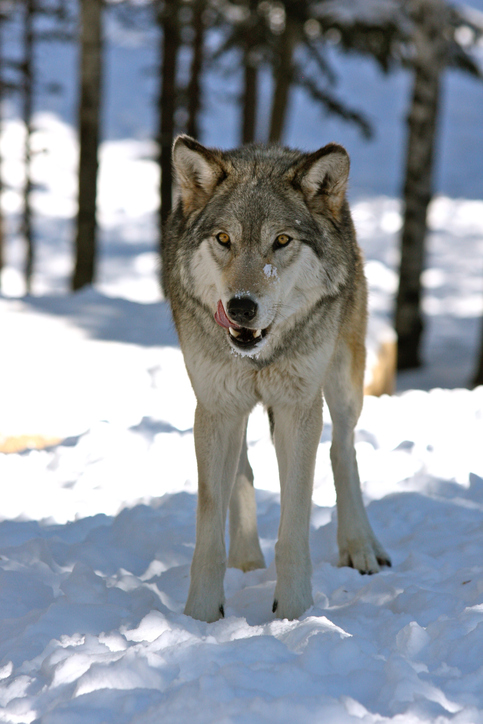The Rocky Mountain Elk Foundation (RMEF) is leading the fight against a movement in Colorado that’s so under the surface you likely haven’t heard about it. An animals-rights group, the Turner Endangered Species Fund (TESF), is seeking to place wolves in the Centennial State.
RMEF recently weighed in on the movement. A representative from TESF is quoted by RMEF as saying the placement of wolves on the Colorado landscape is “most germane” for the state’s future. The rep added “there’s no down side and there’s a real big upside.”
RMEF Responds
In disputing the wolf advocacy group’s claims, RMEF President and CEO David Allen released the following statement:
“Wolves have a measureable and oftentimes detrimental impact on big game management wherever they go. Their reintroduction into the Northern Rocky Mountains led to a reduction of the Northern Yellowstone herd by more than 80 percent. Among other things, wolves also greatly reduced elk numbers to dangerously low levels in central Idaho and have a profound impact on declining moose and deer populations in the Western Great Lakes region.”
According to RMEF, the Northern Yellowstone Elk herd numbered more than 19,000 before wolf reintroduction in the mid-1990s. By 2012, it had dropped below 4,000, though the increase of grizzly, black bear and mountain lion populations affected the decline. Minnesota’s moose population dropped 55 percent from 2006 to 2016.
“We have also witnessed time and time again that pro-wolf groups seek to ignore agreed upon population recovery goals, thus moving the goal posts, so to speak, by filing obstructionist lawsuits designed to drag out or deny the delisting process altogether and allowing wolf populations to soar well above agreed upon levels,” Allen said. “These groups totally ignore what they themselves agree to once they get wolves on the landscape and they use lawsuits to manipulate the system, ignoring state-based management. And, in many cases the American taxpayers are paying for their legal fees.”
The Battle Over Wolves
There are currently at least nine lawsuits regarding wolf populations by animal-rights groups in the Northern Rockies alone. Six more lawsuits are filed in the Western Great Lakes, as well as more in other parts of the contiguous U.S., RMEF reports. At present, two cases involving listing status in Wyoming and the Western Great Lakes are pending in the D.C. Circuit Court of Appeals.
These battles began with the wolf reintroduction efforts of the mid-90s. Federal and state agencies agreed to delist wolves and placed them under state management. The agreement set recovery levels at 100 wolves in each Idaho, Montana and Wyoming. Each of the three states met those levels by 2002 and were 500 percent those levels by 2015. Yet the delisting of wolves still has not occurred. The same was the case in the Western Great Lakes. Wolf populations nearly tripled the set minimum population but, still, wolves there were not delisted.
“An unhealthy and litigious precedent has been set that once pro-wolf groups get a foot in the reintroduction door, they kick it open and file lawsuit after lawsuit to stymy the delisting process while using the wolf as a fundraising tool. Colorado’s elk population will be next in the crosshairs,” Allen said in the press release. “And by the way wolves are nowhere near endangered.”
More Information About TESF
According to its website, the Ted Turner-owned group — along with Turner Biodiversity Divisions — is “dedication to conserving biological diversity by ensuring the persistence of imperiled species and their habitats with an emphasis on private land.”
Additionally, “Our activities range from single species conservation actions to restoration of ecological communities and functional ecosystems. (TESF is) unique in our efforts to bring the role of private lands to the forefront of ecological conservation. We aim to use the best science to effectively conserve biodiversity and disseminate reliable scientific and policy information. We are determined to establish a new level of effectiveness for private-public efforts to redress the extinction crisis.”
Current projects are listed on TESF’s website. They include animals from the red-cockaded woodpecker to gopher tortoise to cutthroat trout and Chiricahua leopard frog. Also listed is a goal for Mexican wolf re-population and “to promote the persistence of (Northern Rocky Mountain) wolves on the Flying D Ranch and to understand their relationships with bison and elk.”
For more information, go to www.rmef.org.







